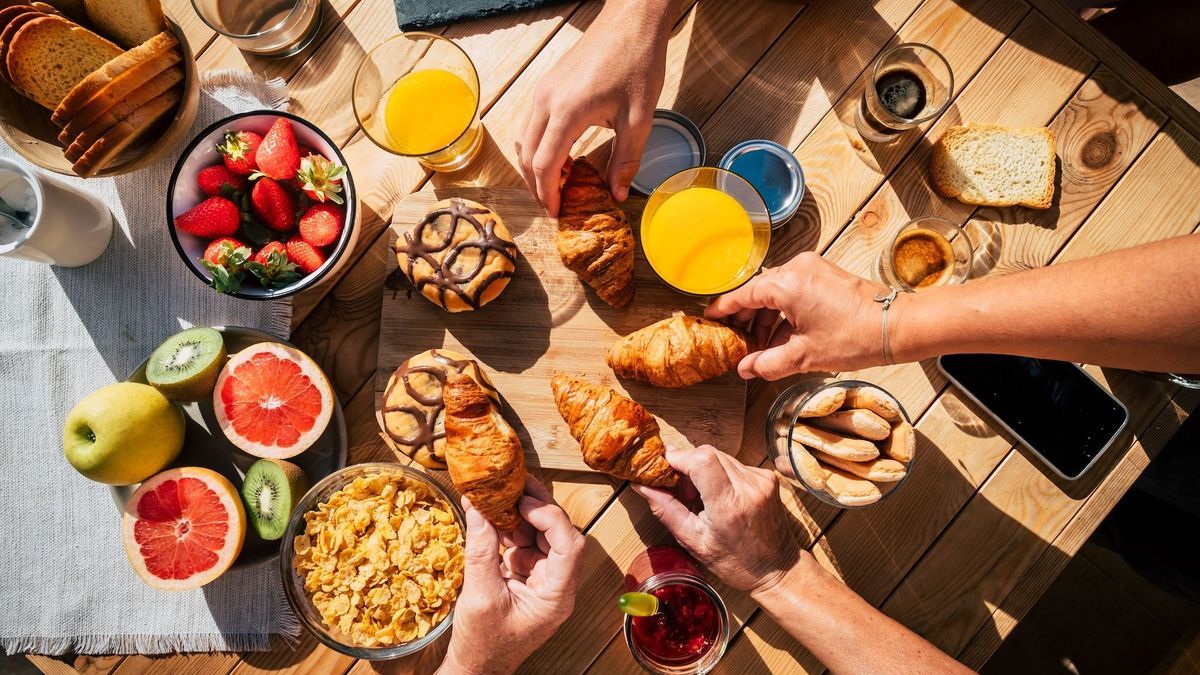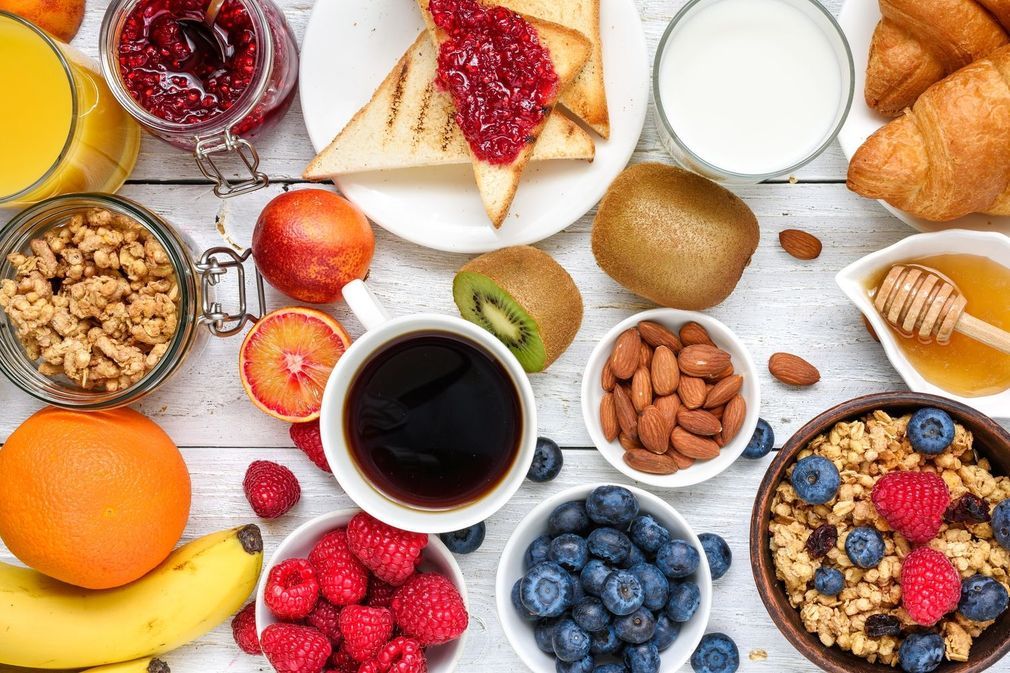
According to an old adage, one should eat “like a king in the morning, like a prince at noon and like a pauper in the evening”. In other words, breakfast would be the most important meal of the day, hence the interest in taking care of it. Especially since this first meal of the day tends to set the tone for the following meals. So what is a balanced breakfast? What are the foods to favor, and on the contrary those to avoid? What to take when you want to lose weight? And what if you’re really not hungry? The answers of Charlotte Debeugny, dietician and author.
Why is breakfast so important?
Breakfast is the first meal of the day, the one that breaks the overnight fast, and provides the energy and nutrients needed to face the morning. “It is important, but not necessarily more than the other meals: the main thing is to have a balanced and healthy diet all day“says Charlotte Debeugny.
It is necessary to take into account your own needs and your own desires in order to be able to maintain good habits over the long term. However, some people have no or very little appetite in the morning when they wake up, and will find it very difficult to sit down to a full breakfast: it is essential to respect this. “I have many patients who don’t eat in the morning and who don’t feel hungry or tired before lunchtime: so there’s no need to force yourself! On the other hand, if you don’t eat in the morning and you feel a drop in energy and cravings in the morning, it’s because you have to review things” explains the dietitian.
Be careful though, this meal is really important for growing children and teenagers, who need energy in the morning to be efficient, focused and operational throughout the morning.
Healthy breakfast: what foods in an ideal breakfast?
On paper, a balanced breakfast consists of several elements:
A food source of complex carbohydratesand ideally with a low glycemic index (GI):
- Wholemeal bread, bran, cereal, black bread…
- Unsweetened and unpopped cereals: oat flakes, muesli without added sugar… They are essential after several hours of fasting, to replenish the stock of glucose, fuel for the body and in particular for the muscles and the brain.
They are preferred with a low GI so that they do not cause a spike in blood sugar levels, often responsible for reactive hypoglycemia and a new craving shortly afterwards. These low GI complex carbohydrates will, on the contrary, provide carbohydrates slowly assimilated by the body, in order to last all morning without a drop in energy or cravings.
A food source of protein : Yoghurt, fromage blanc, skyr, cheese, ham, egg, salmon… these foods contribute to satiety and boost motivation and alertness.
A fresh fruit : for fibre, vitamins and minerals. This fruit should ideally be fresh and whole, in order to be as rich as possible in micronutrients and fiber, and because that is how it is the most satiating. We therefore prefer a bite-size or quartered apple to an apple count.
A food source of lipids : butter, non-hydrogenated vegetable margarine, olive oil, oleaginous puree (almonds, hazelnuts, peanuts), avocado, or whole oleaginous fruits.
What are the foods to avoid in the morning?
If it is always important to limit industrial and very sweet foods, it is even more so in the morning. Cookies (even the “breakfast specials”), most sweet and puffed children’s cereals, crunchy muesli (Cruesli or granola type) with chocolate or caramel, and of course chocolate or speculoos spreads , are therefore to be avoided as much as possible at breakfast. “These foods have the ability to raise blood sugar very quickly and very high, and to cause a reaction hypoglycemia as fast and as strong: cravings as the key. insists the dietitian. Maintaining a moderate and constant blood sugar level throughout the day is essential both for health and for maintaining a stable weight. Moreover, these foods are devoid of micronutrients and are therefore of no interest to health.
We also avoid the glass of fruit juice in the morning, even if it is freshly squeezed. A glass of fruit juice unfortunately behaves in the body like a glass of soda or a sugary drink: by rapidly raising blood sugar and stimulating the appetite.
“Finally, we avoid the traditional combo: white baguette + jam, which are two very high GI foods. says Charlotte Debeugny.
For lovers of jam: you can choose it low in sugar, and spread it on wholemeal bread, adding a dairy product to lower the glycemic index of the meal.
Menu for a balanced savory breakfast
In Europe, the traditional breakfast is rather frugal and sweet. To find some ideas for balanced savory breakfasts, we can take inspiration from our European neighbors.
Norwegian breakfast:
A slice of black bread, a tablespoon of cream cheese spread, a thin slice of smoked salmon and a small fresh fruit salad.
Spanish breakfast:
A slice of wholemeal bread rubbed with garlic, a spoonful of olive oil, crushed tomato, a thin slice of Serrano ham.
English breakfast:
A scrambled with fried mushrooms, a thin slice of lean bacon, white beans with tomato (or English Bean’s).
Menu for a balanced sweet breakfast
Here are some examples of sweet, balanced breakfasts that won’t raise blood sugar levels.
- A quarter of a cereal baguette, spread with a tablespoon of natural peanut puree with a few slices of bananas, and a plain white cheese with a few diced apples.
- Plain yogurt, muesli with no added sugar, a few crushed hazelnuts and raspberries.
- A porridge bowl with oat flakes cooked in cow’s milk or rice, with a tablespoon of almond puree and fresh fruit as a topping.
Menu for a balanced breakfast for children
It is especially important that children eat in the morning before going to school, and we all know their appetite for very sugary foods. The latter are less to be demonized for them, who have a greater physical activity than adults and spend time running and exercising in the playground.
You must try to combine foods with breakfast that will lower the total glycemia of the meal, and if possible not combine several foods with a very high GI. Note that in the children’s cereal department, the recipes for certain products have been revised with a view to lowering sugar levels and improving the nutriscore. Some packets of chocolate puffed cereals thus display a nutriscore B: they are to be preferred. “In the absence of a nutriscore, cereals with less than 15 g of sugar/100 g are preferably chosen. There are now several brands sold in the health food section, which offer children’s cereals that are low in sugar but sources of fibre.“says the dietitian.
- Toast of wholemeal bread with a little butter and low-sugar jam + a glass of milk with a teaspoon of cocoa powder + a small bowl of fresh fruit or a banana.
- A bowl of nutriscore B children’s cereal with semi-skimmed milk + fruit compote with no added sugar.
The chocolate-hazelnut spread (organic and preferably without palm oil) can be consumed occasionally, on weekends or during holidays for example.
And for the little “salty beaks”:
- A slice of cereal bread + cream cheese spread + a small slice of nitrate-free ham + a glass of fresh fruit juice.
NO to diets, YES to WW!
Menu for a slimming breakfast
When watching your weight, it is more essential than ever to start the day with a meal with a low glycemic index and very rich in protein. Protein is indeed a very satiating nutrient, and it helps fight muscle wasting often associated with weight loss. “A food rich in complex carbohydrates (bread, cereals) is not essential for people who can do without them without feeling hungry. says the dietitian.
- A boiled egg, a fruit, a handful of oilseeds;
- A small slice of black bread, a thin slice of smoked trout and fresh fruit;
- A skyr yogurt, some raspberries, a tablespoon of chia seeds, some almonds and possibly a handful of rolled oats.

